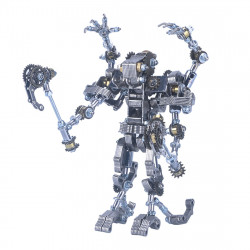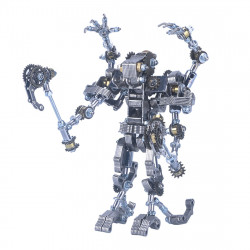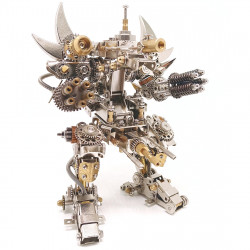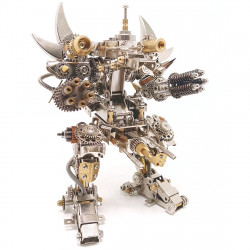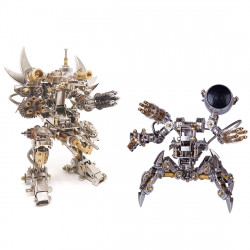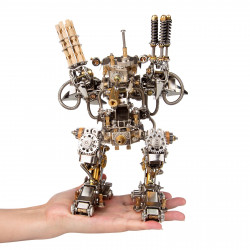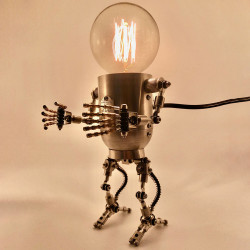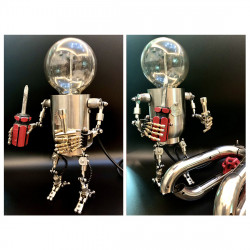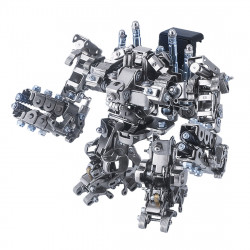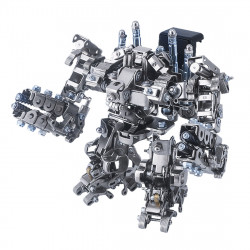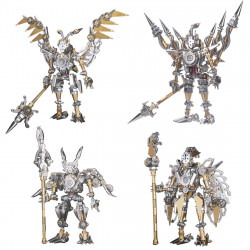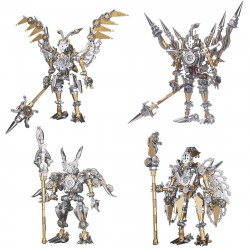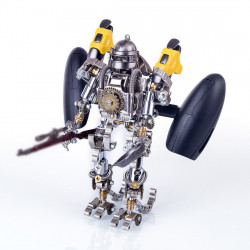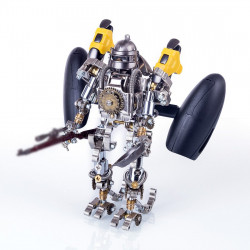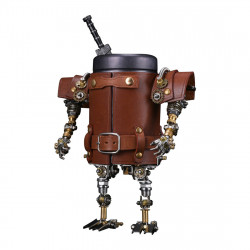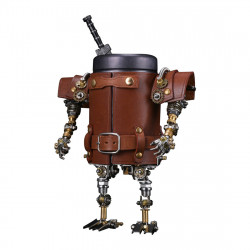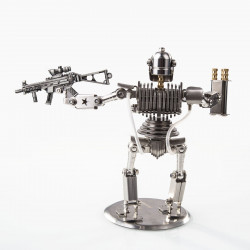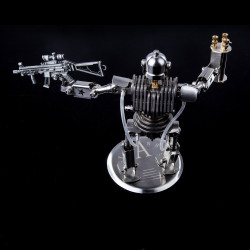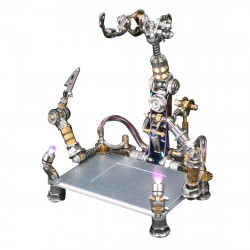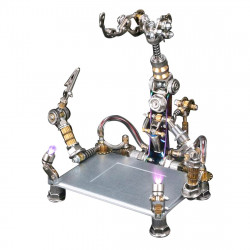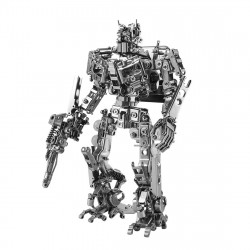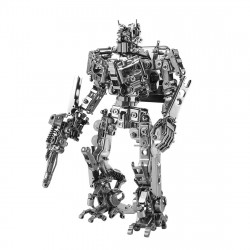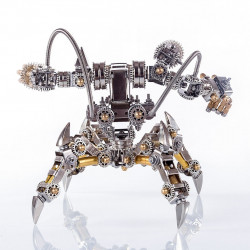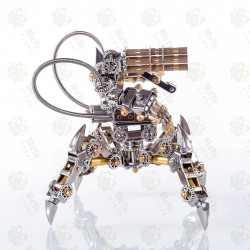Mecha Series
Everything to Know About Mechanical Puzzles
For decades, puzzles have existed in many forms, and many individuals like to use them to test their mental stamina. According to research, over 71% of women and 68% of men in the US like a good puzzle challenge. What happens, though, if we step it up a notch? Are there any unique puzzles you can attempt to break free from the norm?
If you're looking for experiences like this, mechanical puzzles might be the solution. If you want to learn more about these kinds of puzzles, read the material below. We'll review their types, history, and other topics to help you understand the concept of mechanical puzzles.
Origins and History of Mechanical Puzzles
Mechanical puzzles have a long history that began in antiquity. Though scientists are unsure if these were the first mechanical puzzles made, people have constructed puzzles out of wood. The first mechanical puzzle idea was documented in modern-day Iran in the seventeenth century. These puzzle locks required the player to assemble different components to form the correct shape.
Since then, creative mechanical puzzles that put your patience and problem-solving abilities to the test have been created. However, we'll talk about that subject below.
Common Types of Mechanical Puzzles
Various mechanical puzzles are available to suit your interests and ability levels. To better understand the market and select the type you like, we've listed the most popular varieties below.
- 3D puzzles typically consist of plastic or metal and have predetermined shapes and things you must assemble. They can also be used as ornamental elements once you've solved them.
- Take-apart — These mechanical puzzles are meant to disassemble them, as the name implies. The difficulty of the puzzle you choose can vary. However, if you can solve it, you will reach your goal.
- Put-together—place-together puzzles call for you to place the pieces together and form the appropriate shape. These mechanical puzzles have movements and skills most similar to traditional ones.
- Lock — In mechanical puzzles, you have to work the available locks to put the puzzle back together and take it apart. To solve these problems, a particular set of movements is typically needed.
- Sequential movement — These puzzles are made up of algorithms you must follow one at a time to solve them. Rubik's cubes are the finest illustration of this type of problem; you must make the right moves to solve them.
The mechanical puzzle market is growing. We expect to see many new types of puzzles in the future.
Best Mechanical Puzzles
There are mechanical puzzles everywhere, so picking the finest one among the many available options can be challenging. To make things more fun and help you learn about mechanical puzzles, we have created a list. This list includes some of the most exciting and popular riddles you can find.
- 3D butterflies and insects — These puzzles simultaneously enhance the visual and enjoyment aspects. You will watch an artwork come to life while putting the puzzle together, adding décor to your house or place of business.
- Mechanical Rubik’s cube — Imagine a traditional Rubik's cube with a slight modification. To put the cube together, you will need to rearrange all fields. If you enjoy solving Rubik's cubes, this cube will undoubtedly add another difficulty to your everyday routine.
- Nut and bolt — Nuts and bolts have the most mechanical air. These mechanical puzzles are fortunately widely available, allowing you to challenge your mental acuity and experience the feeling of being a trustworthy mechanic.
We advise you to try these recommendations, regardless of your skill level or previous experience.
Tips for Solving Mechanical Puzzles
Getting started with a mechanical puzzle can be intimidating. You can use the advice below to boost your knowledge and quickly become an expert in mechanical puzzles.
- Understand the puzzle's goal – The first step is to consider what is expected of you. Does the puzzle need to be assembled, disassembled, or unlocked? Which method should you begin applying to solve the puzzle? Prioritize the aim at all times and design your approach accordingly.
- Look at all the pieces – Determining what to do with each component will be easier if you look at them closely. You'll have insight into what to do, aiding your understanding and puzzle-solving.
- Pay attention to all details – The finer points are where mechanical puzzle art resides. One way to find a hint could be to shake the puzzle and hear a particular sound. Thus, pay attention and search for hints to get at the outcome.
- Stay patient – Solving mechanical challenges can take some time, so exercise patience. The secret to solving mechanical riddles is to put in a lot of effort; if it takes you days, don't give up.
If you follow these tips, you’ll see results and start making your puzzle dreams come to life.
How Mechanical Puzzles Help Develop Various Skills
Not only are mechanical puzzles entertaining. They can assist you in honing and developing a variety of abilities, including the following:
- Problem-solving skills – When you begin solving mechanical puzzles, you will view all real-world issues in a new light. You'll be able to tackle problems more quickly and with a completely different strategy.
- Memory – Your memories will change as soon as you go on the voyage. You can learn more while having fun because mechanical puzzles make you recall even the tiniest information.
- Logical thinking – The only way to tackle any mechanical puzzle is to take a rational approach. Consequently, your ability to reason logically will improve the more you play.
- Fine motor skills – These puzzles will test your hand-eye coordination and other fine motor skills. They will help improve these skills and your overall health.
Pop Culture and Mechanical Puzzles
Robotic puzzles have become popular worldwide. We have seen them in many TV series, films, music, and literature. You can look at a few of the following instances:
- The Da Vinci Code – The protagonist must figure out a made-up mechanical challenge to access the cryptex's contents, which include a theological mystery dating back 2,000 years.
- Sherlock – The renowned investigator's task is to solve mental and technical riddles to resolve the matter and assist his people.
- Puzzle art – You can see more and more galleries with puzzle exhibitions to honor their complexity and entertainment.
Conclusion
Contemporary artworks that continue to grow are mechanical riddles. You'll rapidly grasp the techniques and become an expert, even though they may initially seem fascinating and daunting. Now you know where these puzzles came from, what kinds are the best, and how they affect your ability to develop new skills and stay healthy.
If you are thinking about exploring mechanical puzzles, know that there are many benefits beyond just having fun. By using a small object you can hold in your hands, you can improve your fine motor skills.
This practice helps you become more careful and solve problems more quickly. You will also enjoy other benefits. Not only do these puzzles solve two problems at once, but they also make great ornamental pieces.
